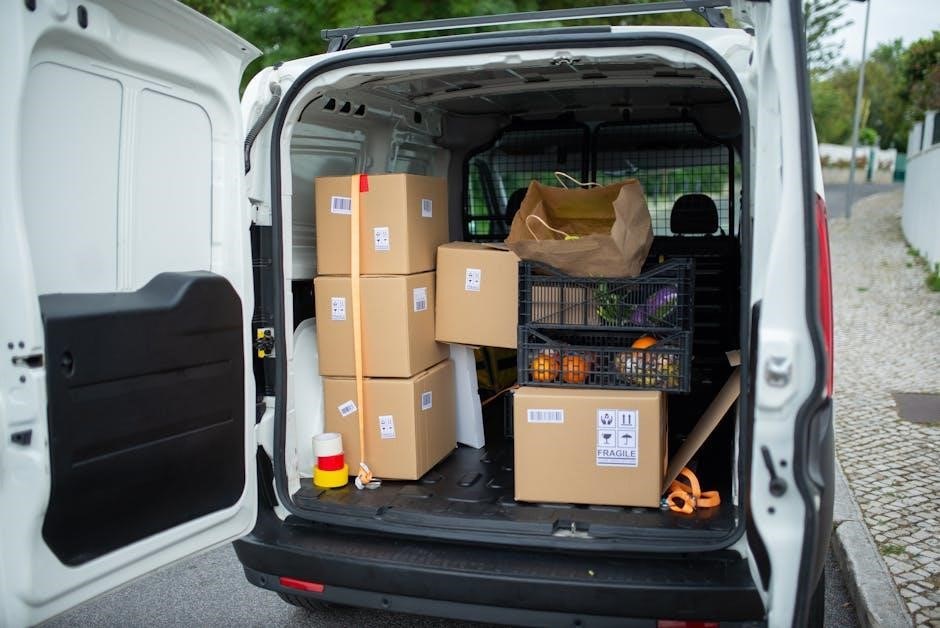
An asylum request letter is a crucial document for individuals seeking refuge, outlining their persecution fears and reasons for requesting protection. It must be sincere, clear, and backed by evidence to ensure credibility. Free templates are widely available online, simplifying the process for applicants. Proper formatting and submission are essential for a successful application.
1.1 Importance of a Well-Structured Letter
A well-structured asylum request letter is vital for clearly presenting your case, ensuring all necessary information is included. It enhances credibility, making it easier for authorities to assess your situation. A structured format helps highlight key details, such as persecution reasons and evidence, ensuring your application is taken seriously. Proper organization also demonstrates sincerity and professionalism, which are critical for a successful asylum request.

Key Elements of an Asylum Request Letter
An asylum request letter must include personal background, reasons for seeking refuge, and supporting evidence to establish credibility and justify protection needs effectively.
2.1 Personal Information and Background
The letter must begin with the applicant’s full name, date of birth, and nationality. Include a detailed personal history, such as family background, employment, and education. Clearly state the applicant’s current address and contact information. Additionally, provide a brief overview of the circumstances that led to the asylum request, ensuring all information is accurate and verifiable. This establishes credibility and provides context for the request.
2.2 Reasons for Seeking Asylum
Clearly state the reasons for seeking asylum, such as persecution due to race, religion, nationality, political opinion, or membership in a social group. Provide specific examples of threats, violence, or discrimination experienced. Explain why you cannot return to your home country or seek protection there. Be detailed and truthful to establish a credible case. This section is vital for demonstrating the necessity of asylum and ensuring a fair evaluation of your request.
2.3 Supporting Documentation
Include documents verifying your identity, such as passports or birth certificates. Attach evidence of persecution, like police reports, medical records, or witness statements. Provide proof of imminent danger, such as threatening letters or photos of damages. Any relevant legal documents, like court decisions, should also be included. These materials strengthen your asylum request by offering concrete support for your claims and demonstrating the urgency of your situation.
Locating Free Templates
Free asylum request letter templates are available on legal aid websites and non-profit organization portals. These templates guide you in structuring your application effectively and professionally.
3.1 Recommended Websites and Resources
Reputable websites like Refugee Council, Asylum Aid, and government immigration portals offer free asylum letter templates. Non-profit organizations such as UNHCR and Amnesty International also provide downloadable resources. These platforms ensure templates are legally compliant and user-friendly, guiding applicants through the process effectively. They often include instructions and examples to help draft a compelling request.
3.2 Using Microsoft Word or Google Docs
Microsoft Word and Google Docs provide user-friendly platforms for drafting asylum request letters. Templates can be downloaded and customized to fit specific needs. Both tools offer formatting options to ensure clarity and professionalism. Google Docs allows real-time collaboration, useful for receiving feedback. Built-in export features enable easy conversion to PDF, a common requirement for submissions. These tools simplify the process of creating a well-structured and polished request letter.
Understanding the PDF Format
The PDF format ensures documents remain unchanged, preserving their layout and content. It is widely accepted for official submissions due to its reliability and universality. Free tools like LibreOffice or OpenOffice enable easy conversion of asylum request letters to PDF, maintaining professionalism and ensuring compatibility across platforms.
4.1 Benefits of PDF for Submission
PDF format offers numerous advantages for submitting asylum documents. It ensures that the layout, formatting, and content remain intact across different devices and platforms. PDFs are universally compatible, reducing the risk of formatting errors. They also provide a professional appearance, which is crucial for official applications. Additionally, PDFs can be easily shared and stored, making them a reliable choice for legal submissions. This consistency is vital for the credibility of asylum requests.
4.2 Tools for Converting Documents to PDF
Several tools can convert documents to PDF, ensuring compatibility and professionalism. LibreOffice and OpenOffice offer free built-in export options. Smallpdf provides an easy-to-use online converter, while Adobe Acrobat offers advanced features. These tools are reliable and user-friendly, making document conversion straightforward. They support various file formats, ensuring your asylum request letter maintains its integrity and presentation when submitted.
Necessary Documentation
Key documents include proof of identity, evidence of persecution, and records of threats. These materials are vital for demonstrating eligibility and supporting your asylum request effectively.
5.1 Identification and Proof of Persecution
Include clear identification documents like passports or identity cards, and evidence of persecution, such as police reports, medical certificates, or witness statements. These documents validate your claims and demonstrate the urgency of your situation. Proof of persecution may also include threats, court documents, or news articles. Organize these records meticulously to strengthen your asylum request and ensure credibility.
5.2 Evidence of Imminent Danger
Evidence of imminent danger is critical to support your asylum claim. Include documents like recent threats, police reports, or medical records showing harm. Witness statements or news articles corroborating dangerous conditions in your home country are also valuable. This evidence must demonstrate that your safety is at risk if you return, ensuring your request is prioritized for urgent review and protection.

Submission Process
The submission process involves filling out the application form, attaching required documents, and submitting it to the appropriate authorities. Ensure all information is accurate and complete to avoid delays. Obtain a receipt as proof of submission and follow up regularly to track the status of your application.
6.1 Steps to Submitting Your Application
Complete the application form accurately, ensuring all personal and background details are included. Attach required documents such as identification, proof of persecution, and evidence of imminent danger. Submit the application to the relevant authority, such as OFPRA or local immigration offices. Obtain a receipt as proof of submission and keep it safe. Follow up regularly to track the progress of your application and address any additional requirements promptly.
6.2 Follow-Up Procedures
After submitting your application, contact the relevant authority to confirm receipt. Wait for the assigned case officer to review your documents, which may take several months. If additional information is requested, respond promptly to avoid delays. Once a decision is made, you will receive official notification. If approved, proceed with the next steps for residency. If denied, seek legal advice for appeal options or further action.

Legal Considerations
Understanding asylum laws and seeking legal assistance is crucial for a successful application. Legal representation ensures compliance with regulations and helps avoid procedural errors or misinterpretations of requirements.
7.1 Understanding Asylum Laws
Asylum laws vary by country but generally protect individuals fleeing persecution based on race, religion, nationality, political opinion, or social group. Applicants must prove a well-founded fear of persecution. Legal frameworks outline eligibility criteria, submission processes, and rights of applicants. Familiarity with these laws ensures compliance and strengthens the application. Consulting legal resources or professionals is highly recommended for accurate understanding and adherence.
7.2 Seeking Legal Assistance
Seeking legal assistance is crucial when preparing an asylum request. Lawyers specialize in immigration laws and can guide applicants through complex procedures. They help draft letters, gather evidence, and ensure compliance with legal standards. Legal aid organizations often provide free or low-cost services, making professional help accessible. Expert advice significantly improves the chances of a successful application and ensures all requirements are met effectively.
Common Mistakes to Avoid
Common mistakes include incomplete information, lack of supporting evidence, and poor formatting. Ensuring accuracy and thoroughness is vital for a successful asylum request application.
8.1 Incomplete Information
One common mistake is submitting an asylum request with incomplete information. Missing details, such as personal background or reasons for persecution, can delay or jeopardize the application. It is crucial to provide a thorough account of events, ensuring all relevant facts are included. Omissions may lead to additional scrutiny or rejection. Always double-check the application for accuracy and completeness before submission.
8.2 Lack of Supporting Evidence
A critical error is submitting an asylum request without sufficient evidence. Missing documents, such as proof of persecution or identification, can weaken credibility and lead to delays or rejection. Ensure all claims are backed by reliable evidence, including testimonials, medical records, or judicial documents. Without proper documentation, the application risks being deemed incomplete or lacking merit. Always verify that all necessary evidence is included and clearly presented.

Additional Resources
NGOs and support organizations offer guidance and templates for asylum letters. Online forums and communities provide shared experiences and advice, aiding applicants in preparing strong submissions.
9.1 NGOs and Support Organizations
Non-governmental organizations (NGOs) and support groups play a vital role in assisting asylum seekers. They often provide free templates, legal advice, and guidance for crafting effective asylum request letters. These organizations ensure applicants understand the process and requirements, helping them present strong cases. Many NGOs also offer workshops and resources to aid in document preparation, making the application process more accessible and less intimidating for those seeking refuge.
9.2 Online Forums and Communities
Online forums and communities offer valuable resources and support for asylum seekers. They provide access to free templates, advice, and shared experiences. These platforms allow individuals to connect with others who have gone through similar processes, offering emotional support and practical tips. Many forums also host discussions on best practices for drafting asylum request letters, helping applicants improve their submissions and understand the complexities of the process.
Crafting a well-structured asylum request letter is vital for a successful application. Utilize free templates, ensure clarity, and support your case with strong evidence for the best outcome.
10.1 Final Tips for Success
To ensure a successful asylum request, proofread your letter meticulously, seek legal advice if possible, and use templates to maintain clarity. Submit your application on time and include all necessary documentation. Organize evidence logically and ensure your narrative aligns with asylum laws. Stay persistent and follow up regularly to track your application’s progress. These steps will enhance your chances of a positive outcome.